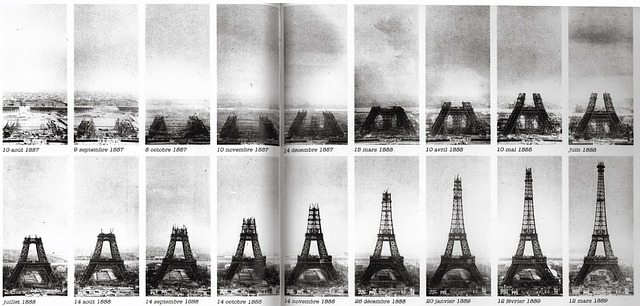【Archaeology】An Annotated WWII Underwater Archaeology Bibliography
With four decades of WWII underwater archaeology publications, the time is nigh to create a comprehensive bibliography and conduct an analysis of tren... [more]
With four decades of WWII underwater archaeology publications, the time is nigh to create a comprehensive bibliography and conduct an analysis of tren... [more]
The majority of Boston's residents are minorities. These minority residents confront the ongoing effects of racism, including the hard histories of e... [more]
The author reports on experiments in megalithic construction using axe-based technology and proposes methods whereby relatively small groups of skilled workers could effectively transport and erect standing stones and dolmen.

International exhibitions in the 19th century were used as showcases for scientific and technological advances, but also often included exhibits of objects from the past, including prehistoric times. Three Expositions Universelles held in Paris 1867, 1878
An archaeology of aesthetics can be more than a study of past artistic evaluation. It can be extended to encompass an understanding of styles of action considered proper and efficacious, and which drew in a knowledgeable and skilful fashion on specific un
Genetic data from archaeological specimens provides a potent new approach fro addressing questions in prehistory. Hair from archaeological sites is an important but overlooked data source amenable to molecular analysis. To date DNA identification from hai
The lead isotope compositions of many different samples from lead ingots of Roman age from two relicts (from Cabrera, and from Saitnes-Maries-de-la-Mer) of the Western Mediterranean have been measured. Other lead isotope analyses of ores, metals or lead i
Slaveholders manipulated the spatial organization of plantations to their advantage in an effort to control the actions of enslaved workers. Slave workers, on the hand, always found ways to resist planter hegemony. Cuban slaveholders, not only employed su
Post-medieval shipwrecks are rich repositories of archaeological evidence with closed and closely integrated contexts. Their value is often enhanced by extensive documentary material. Viewed on its own terms, such evidence, though often of great interest,

In this paper we report the analysis of the economic and social strategies employed by illiterate farmer in early nineteenth-century Kentucky to increase his wealth and social position using wealth gained from slave labor and possibly from slave breeding.
During the 19th century, the Charrua and Minuano Indians participated actively in the definition of the national frontiers in the Prata region. The consolidation of the national States transformed these hunter-gatherers into out-laws, traitors and rebels.
Whilst digital cameras and computer graphics are staring to be used in archaeological recording, stereoscopic photography tends to be overlooked. This technique has been used successfully in three recent projects and could be beneficial as a means of 3D p
In this paper I argue that the visual discourse of archaeological illustration tends to present a specific perspective of the relationship between aesthetics and memory and that this determines how we conceptualize these issues in relation to archaeologic
An evaluation of a surviving stretch of the Abbot's Way, in the Somerset Levels and Moors, was undertaken to assess the consequences of the previous management regime and inform future management of the site. The scheduled site appeared to have been dewa
Cross-cultural comparative approaches have been used widely in archaeological research, yet to date none seem to have achieved their full potential. Synchronic cross-cultural comparisons have provided a number of material correlates of behavior, as well a
New research field and areas of scientific specialization often bring division and disciplinary divides. Here Brown & Pluciennik discuss the impact of genetic research on archaeology.

The archaeology of New World slavery has exponentially expanded during the past two decades to become perhaps the most influential area within today's historical archaeology. As part of this research endeavour, archaeologists have examined many kinds of